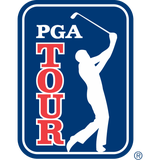
Bob Hope's example for Nicklaus: Never a cross word
WEST PALM BEACH, Fla. (AP) — Jack Nicklaus pulled into circle drive at The Breakers and couldn't make it 25 feet to the door without being stopped for a handshake, a greeting, a photo. It was like that for the next three hours and Nicklaus didn't mind.
Still with him was an example set for him more a half-century ago that has served Nicklaus well.
The occasion on this evening last week was the American Cancer Society's "19th Hole Club," which was celebrating its 50th anniversary. Nicklaus took part in the first one with Bob Hope, Perry Como and Julius Boros. He has made more than a dozen other appearances for the Palm Beach group over the years.
His work with American Cancer Society began a few years earlier in Columbus, Ohio, when Nicklaus played an exhibition with Hope, James Garner and Scioto Country Club head pro Walker Inman. The strongest memory is what happened that night.
Nicklaus invited them over for dinner. His wife, Barbara, was in the final weeks of pregnancy with their third child.
She asked Nicklaus if he would start the grill. In a minute, he told her, after they played some pool. Then, she asked if would prepare the steaks. What about the grill? She had done that herself. After 15 minutes later, she called back down and told him dinner was ready. She had grilled the steaks.
They sat down to eat about 9 p.m. and his wife excused herself. Hope and Garner were telling so many stories that Nicklaus lost track of time, lost track of his wife and finally went to check on her. He found her in their bedroom with her bags packed.
"She said, 'I don't want you to leave your friends. I called the doctor. I called a taxi. I need to go to the hospital,'" Nicklaus said. "I walked back out and said, 'Guys, I've got to take Barbara to the hospital.' You've never seen a room clear out so fast."
Nan, their only daughter, was born two hours later.
Nicklaus loves telling that story. This time, though, there was a postscript.
"The next day after Nan was born, I went down to Cincinnati with Bob Hope. We played at Maketewah," Nicklaus said. "From the time we walked onto the property to the time we walked off, they pulled at him. 'Please take a picture, Bob. Please tell a story, Bob. Please do this, please do that.' He never had one cross word. He did everything everyone asked of him.
"I got back that night with Barbara and said, 'I learned one of the greatest lessons. Here's a guy who just had everybody pulling on him from every direction, and not one cross word. Nothing but a smile.' I told her, 'That's somebody you want to emulate.' And that's what I've tried to do. It was a great lesson for me."
Nicklaus estimates he makes about 50 appearances a year, and the impression left by Hope stays with him.
Some of his work is business, such as speaking at golf courses he has designed or on behalf of his Memorial tournament. Most of it is charity. The American Cancer Society became even more meaningful after that inaugural appearance in 1968 with the 19th Hole Club in Palm Beach.
Eighteen months later, his father was diagnosed with pancreatic cancer, which spread to his liver.
Charlie Nicklaus first took his son to Scioto while recovering from an ankle injury and watched him blossom into the gold standard in golf with his 18 professional majors. He died just more than two months after the diagnosis, in February 1970, and his death is what caused Nicklaus to question how hard he was dedicating himself to golf. He went on another tear, winning at least one major each of the next four years to break Bobby Jones' hallowed record in the majors.
"The first letter I got after Dad passed away was from Vince Lombardi," Nicklaus said. "I played golf with him, he had met my dad and said, 'I saw that a great relationship you had.' It was a nice letter."
More poignant was his final Christmas dinner with his father, when former Ohio State football coach Woody Hayes showed up. He gave them his book and wrote in it, "The best father-son relationship I've ever known."
Around the time his father was diagnosed, the son of a Methodist minister where Barbara Nicklaus attended church was battling Ewing's sarcoma, a rare bone cancer. Nicklaus spent time with Craig Smith, whose favorite color shirt was yellow. Nicklaus told him he would wear yellow when the boy could watch on TV.
He wore a yellow sweater when he won at St. Andrews for the first time in 1970. He wore a yellow shirt in the final round of the 1971 PGA Championship, the last major Craig saw Nicklaus win. And his yellow shirt when he won the 1986 Masters for his 18th major was not an accident. Nicklaus recalls telling his wife the morning of the final round, "I'm going to wear a yellow shirt today. I think Craig would like it."
The 19th Hole Club celebration included a Q&A with Nicklaus hosted by Kim Bokamper, part of the Miami Dolphins' "Killer Bees" defense. There was talk of golf, questions that Nicklaus has heard before and a discussion on cancer.
When it was over, Nicklaus rarely sat back down at his table because of so many people who wanted a story, an introduction, just some of his time.
There was never a cross word.

